Remaining unchallenged in the garden
Published in Genetics & Genomics and Plant Science

A blooming rose is the result of thousands of years of domestication and natural evolution. Modern roses, valued for their vibrant colors, rich fragrances, and continuous blooming, originate from only eight to ten wild ancestors. This narrow genetic base poses a bottleneck to breeding efforts, especially in improving disease resistance and introducing novel traits. To address these challenges, we explored and utilized the genetic diversity of wild Rosa species.
From Wilderness to Laboratory
China is a primary center of Rosa diversity, home to nearly half of all known wild Rosa species. These species possess valuable traits such as disease resistance and unique flower colors. However, their potential remains largely untapped due to taxonomic ambiguities. Frequent hybridization and polyploidy have complicated classification, hindering both scientific research and breeding efforts.
To address these challenges, our team systematically investigated the wild Rosa resources within the country for over decades, covering diverse habitats including deserts in the northwest, alpine meadows on the Xizang Plateau, and forests in the Qinling Mountains. As a result, we collected and preserved more than 200 wild Rosa accessions, representing all major taxonomic groups in China.
This extensive survey was made possible through collaboration across multiple research institutions, including support from Mr. Yuyong Yang, a senior rose breeder and founder of Kunming Yang Chinese Rose Gardening Co., Ltd. Over the past 30 years, he has contributed significantly to the conservation and cultivation of Rosa species, and established China’s largest Rosa germplasm garden. This has provided a crucial foundation for research, breeding, and the introduction of new cultivars.
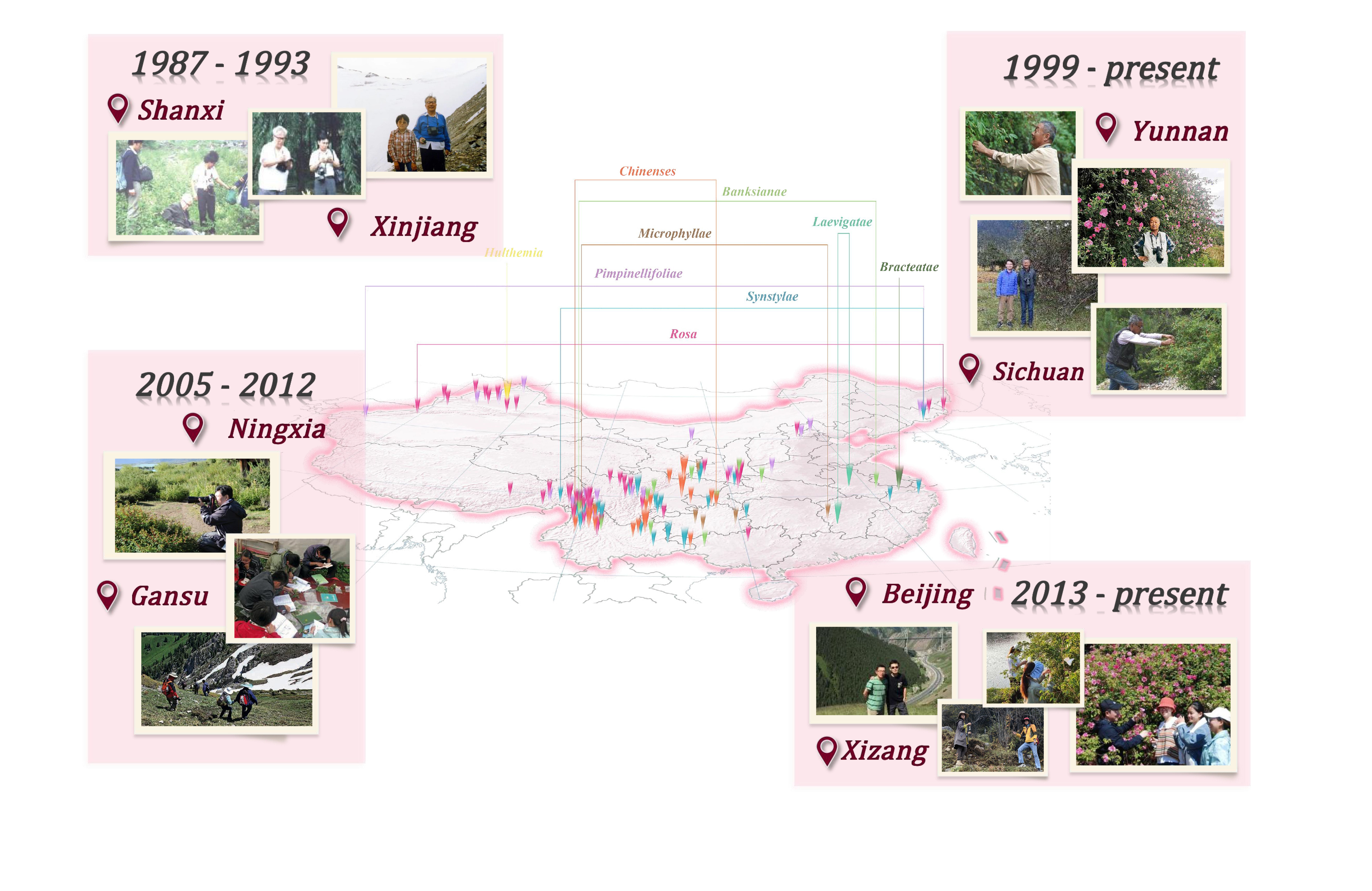
Refining Classification and Unraveling Evolution
Many Rosa species share similar morphological traits but have distinct genetic backgrounds. Traditional taxonomy, which relies primarily on morphology, has often resulted in misidentifications. By combining herbarium studies, phenotypic analyses, chromosome observations, and genome sequencing, we identified and corrected classification errors, leading to a comprehensive Rosa phylogeny.
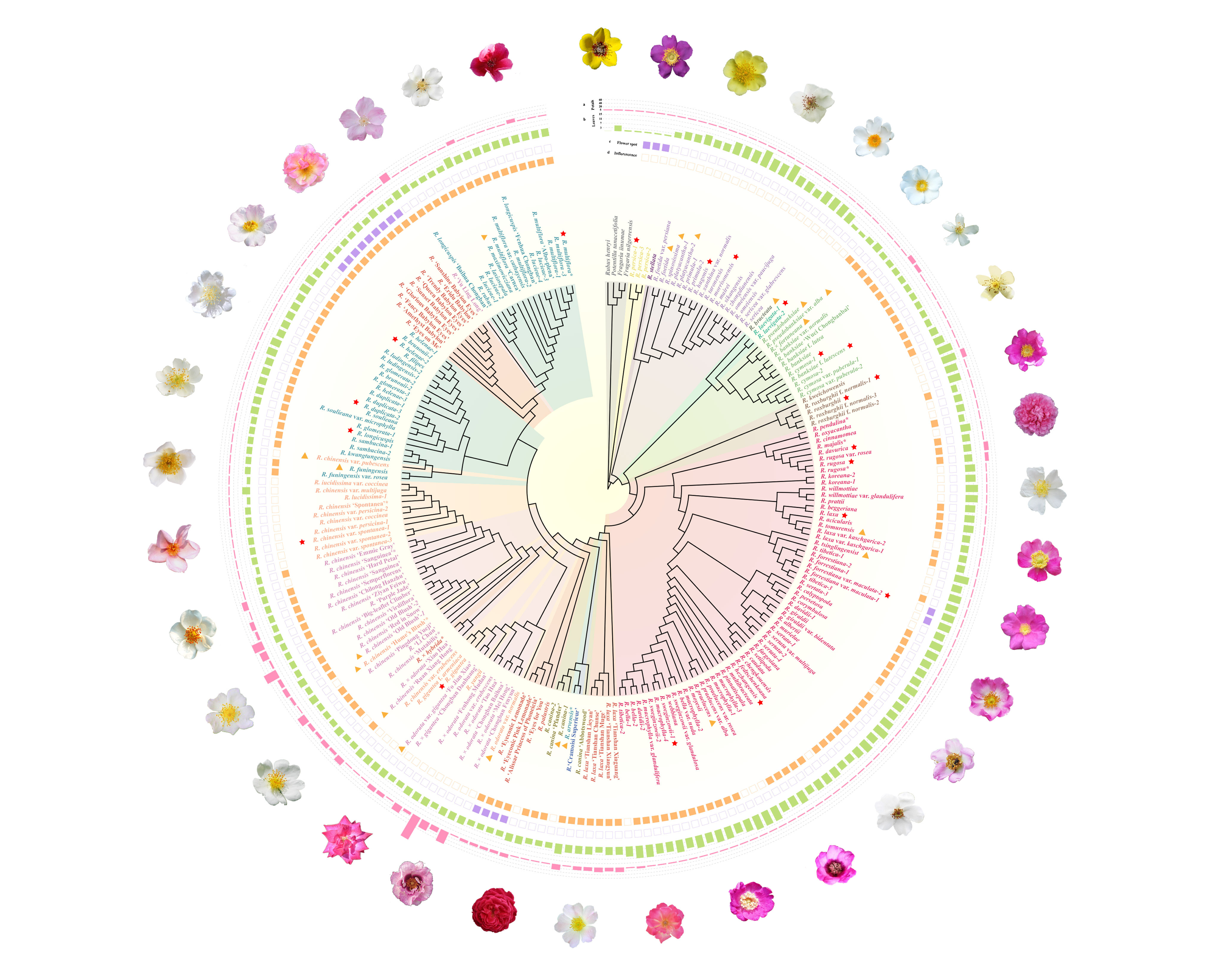
Our findings also indicated that wild Rosa species in China originated from two distinct diversity centers: one in the northwest and another in the southwest. The Qinling Mountains served as a corridor for genetic exchange between these centers of diversities. Ancestral trait analyses suggested that early Rosa species had single-petaled yellow flowers, which later diversified into pink, red, and multi-petaled forms through both natural and artificial selections.
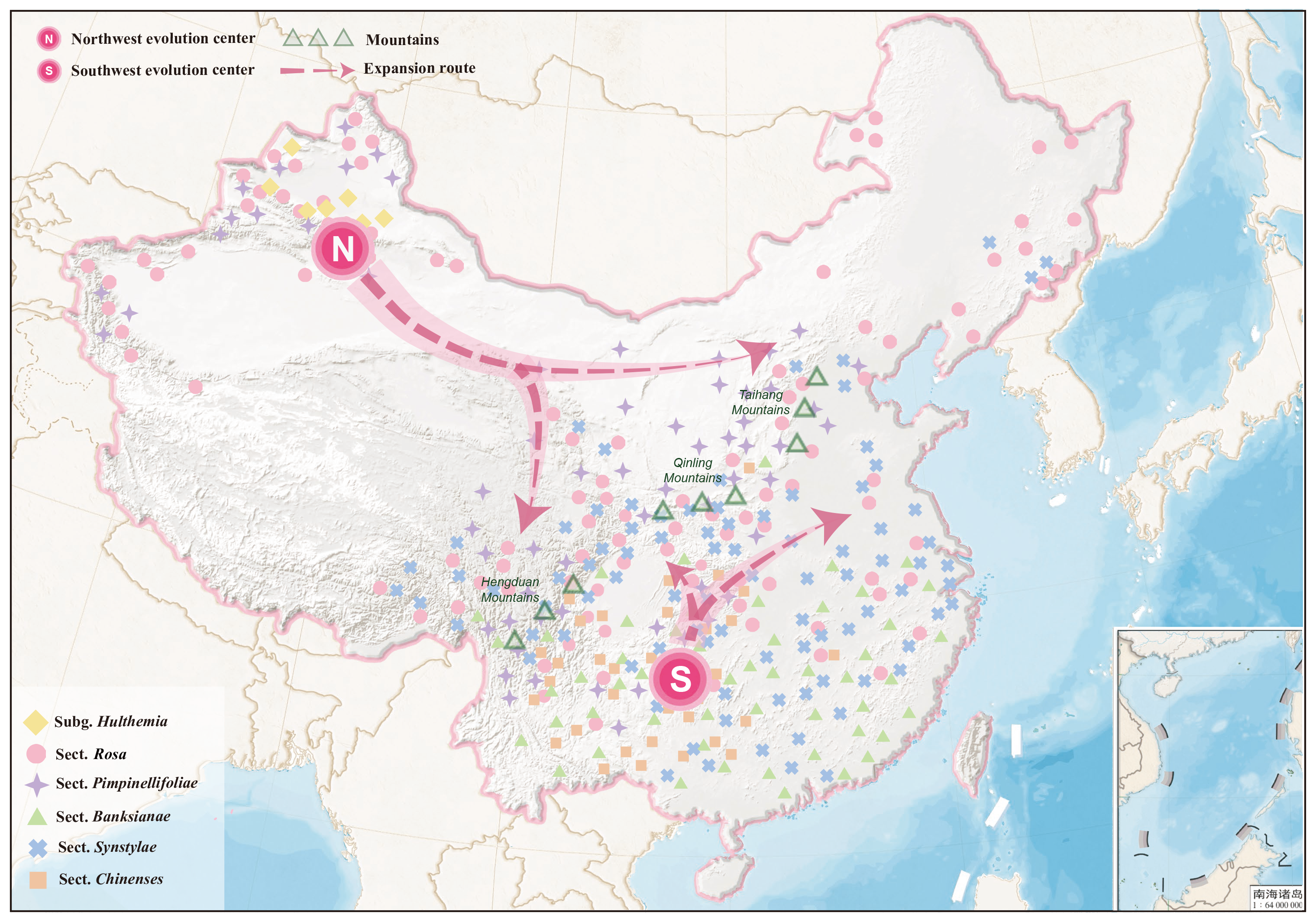
Rose Breeding Revolution 2.0
The breeding efforts in the 17th and 18th centuries were significant milestones in the development of modern roses. Our research aims to support a rose breeding revolution 2.0 by utilizing the genetic diversity of wild Rosa in China. We identified 40 wild and natural hybrid accessions with potential to improve disease resistance and increase the color and fragrance diversity in cultivated roses. Additionally, we described three new Rosa species—R. tomurensis, R. yangii, and R. funingensis—which provide valuable genetic resources for future breeding programs.
This study builds on the efforts of many botanists and breeders. Based on these findings, the team has also published the monograph Genus Rosa L. in China, which provides an essential reference for rose taxonomy and breeding. By integrating wild genetic resources, this research may contribute to the long-term sustainability of the floriculture industry and support future advancements in rose breeding.
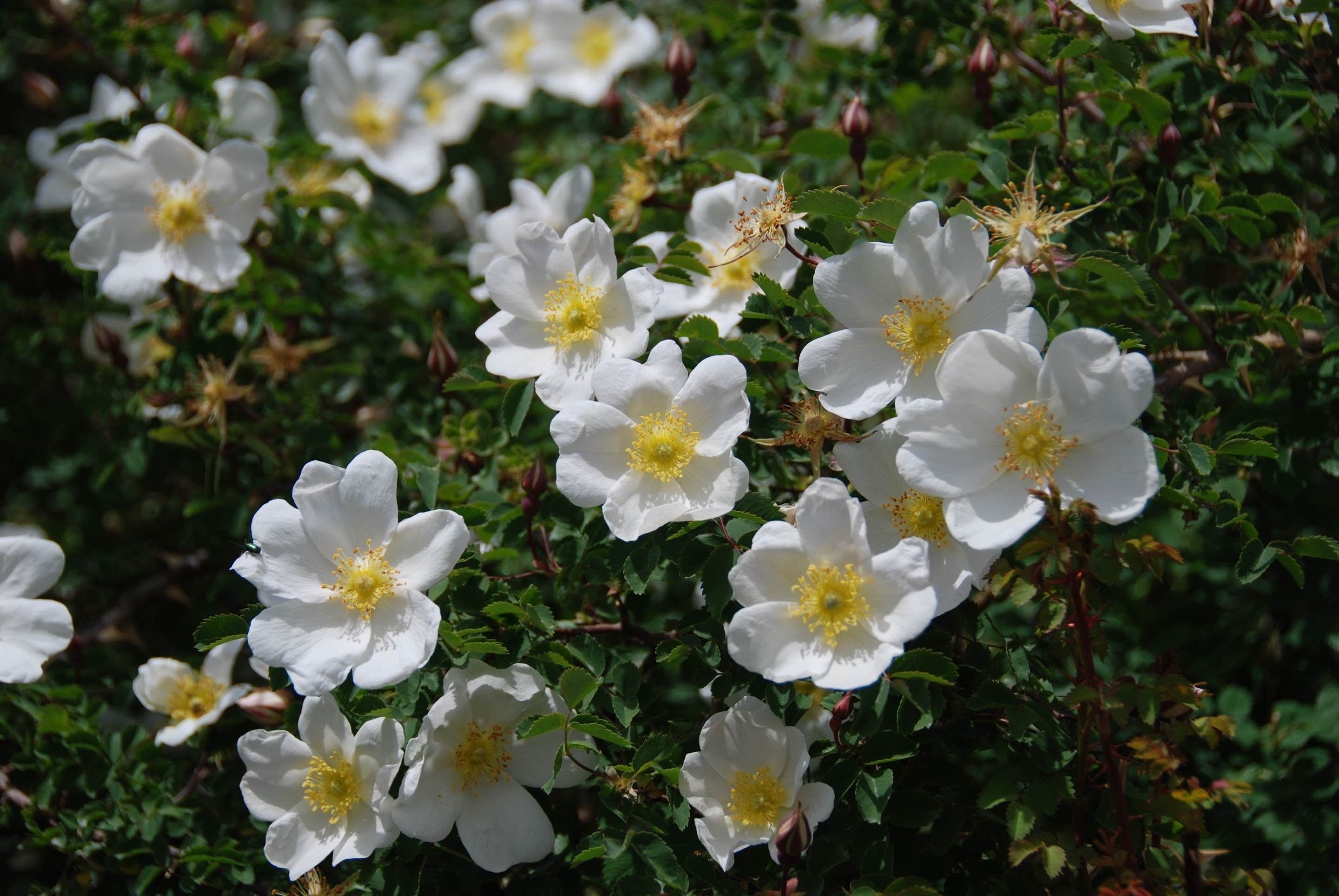
Follow the Topic
-
Nature Plants

An online-only, monthly journal publishing the best research on plants — from their evolution, development, metabolism and environmental interactions to their societal significance.


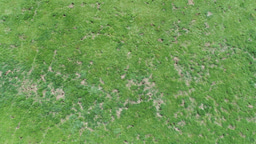
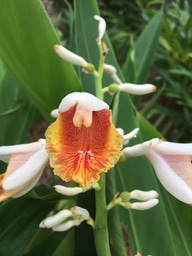

Please sign in or register for FREE
If you are a registered user on Research Communities by Springer Nature, please sign in